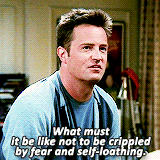Black Friday has become an American tradition: the day after Thanksgiving, everyone piles in the car to face the consumer madness at malls and shopping centers around the country.
While the newly popular Cyber Monday has also recently come on the scene to steal some attention, Black Friday itself still accounts for a large percentage of holiday shopping. In the year 2015, consumers spent a whopping $67,560,000,000 in stores, and another $2,932,000,000 online--that comes out to an average of $403.35 spent per person.
With spending this massive, let's take a look at how Black Friday got its start and how crazy it has gotten since then:
The History
1. Commercial retailers have been pushing people to begin Christmas shopping ever since the late 19th century, during which stores like Macy's and Eaton's would sponsor parades that served as advertising campaigns.
2. By the 1930's, the Friday after Thanksgiving became the official start of the Christmas shopping season, even though the term "Black Friday" wasn't in existence until the 1960's, and didn't become widely recognized until the 1980's.
3. In 1939, President Roosevelt changed the date of Thanksgiving to the second to last Thursday in November in order to extend the shopping season; this lasted for 2 years until the controversy over the changed date became too much and legislators settled on the fourth Thursday of November as a compromise.
4. The term "Black Friday" Philadelphia police officers and transportation workers who dreaded this day for making the city insanely overcrowded; it was not thought of fondly and was not a term of endearment.
By The Numbers
1. 23% of Black Friday retail shoppers camped out at a store for some length of time.
2. 12% of Black Friday shoppers admitted to shopping under the influence of alcohol at some point.
3. 39% of American shoppers feel pressured to spend more than they can afford during the holiday season, according to one survey.
4. The average discount for more than 6,000 popular items is less than 5% on Black Friday; the real discounts come around December 18th (at which point prices could be reduced up to 17.5%).
5. 70% of consumers believe that Black Friday really doesn't mean anything because the sales will continue into the holiday season.
Strange Facts
1. More people die Black Friday shopping than in shark attacks: since 2006, 7 people have died and 98 have been injured in stores due to stampeding, violence, and some gun attacks. Meanwhile, there are only 16 shark attacks in the U.S. each year, with a fatality occurring every 2 years.
2. One year, camping out at Best Buy started November 12th.
3. Jdimytai Damour, a Walmart employee, was trampled to death in 2008 when shoppers first pushed through the front doors; the paramedics that arrived were also injured by shoppers.
4. Many technology products that are deeply discounted on Black Friday may actually be "derivative products," or products made with cheaper components but look like the original model.
5. Black Friday attracts more people than Disneyland: last year, Walmart declared that more than 22 million people showed up to shop in its stores, while only 18.5 million visit Disneyworld in Florida per year and 16 million visit Disneyland in California.










































